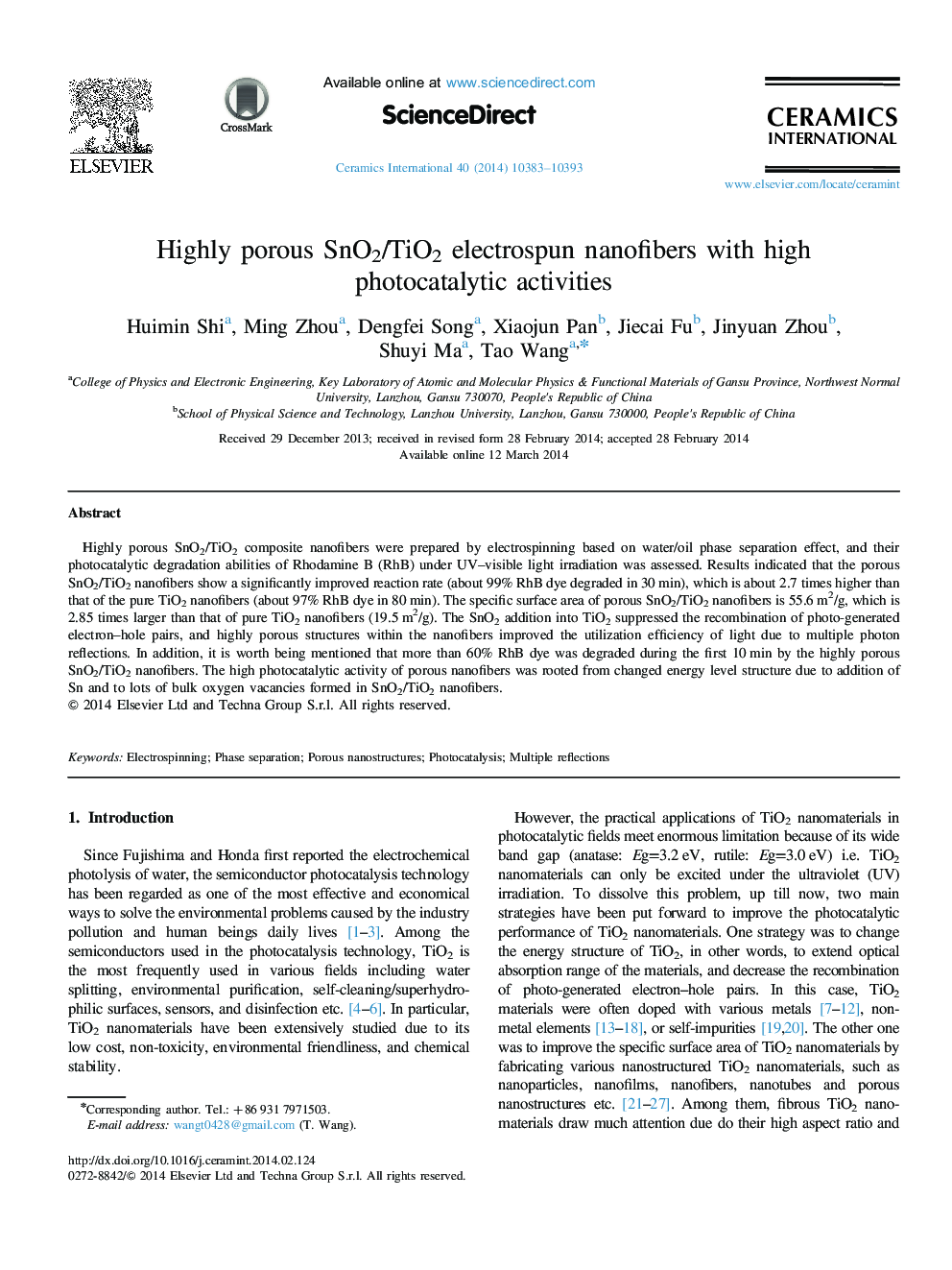| Article ID | Journal | Published Year | Pages | File Type |
|---|---|---|---|---|
| 1461009 | Ceramics International | 2014 | 11 Pages |
Highly porous SnO2/TiO2 composite nanofibers were prepared by electrospinning based on water/oil phase separation effect, and their photocatalytic degradation abilities of Rhodamine B (RhB) under UV–visible light irradiation was assessed. Results indicated that the porous SnO2/TiO2 nanofibers show a significantly improved reaction rate (about 99% RhB dye degraded in 30 min), which is about 2.7 times higher than that of the pure TiO2 nanofibers (about 97% RhB dye in 80 min). The specific surface area of porous SnO2/TiO2 nanofibers is 55.6 m2/g, which is 2.85 times larger than that of pure TiO2 nanofibers (19.5 m2/g). The SnO2 addition into TiO2 suppressed the recombination of photo-generated electron–hole pairs, and highly porous structures within the nanofibers improved the utilization efficiency of light due to multiple photon reflections. In addition, it is worth being mentioned that more than 60% RhB dye was degraded during the first 10 min by the highly porous SnO2/TiO2 nanofibers. The high photocatalytic activity of porous nanofibers was rooted from changed energy level structure due to addition of Sn and to lots of bulk oxygen vacancies formed in SnO2/TiO2 nanofibers.
